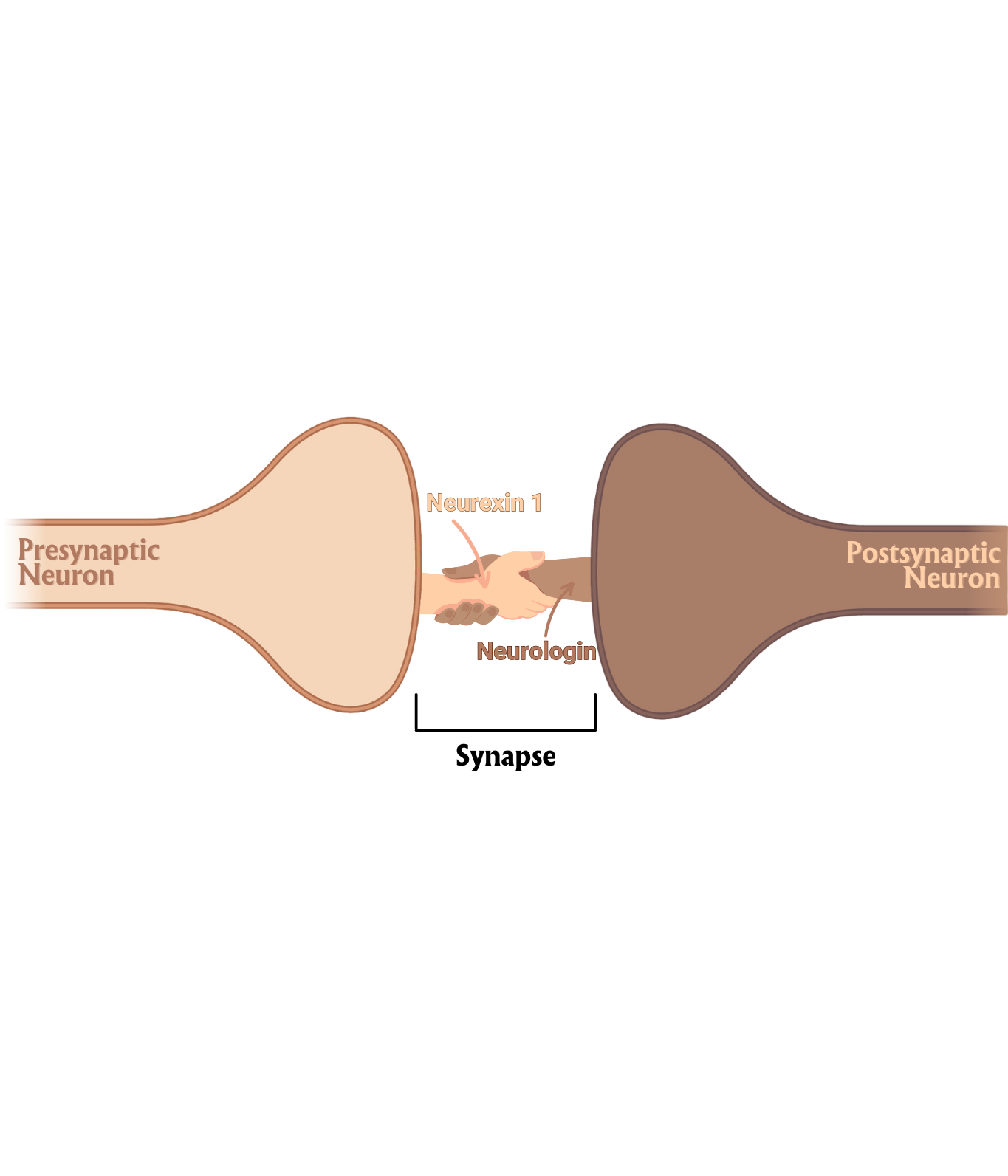The Connection Between Autism and NRXN1
The ASPE Study is a study of autism, so why are we also looking at NRXN1?
Did you know that variants in the Neurexin 1 (NRXN1) gene on Chromosome 2p16.3 make NRXN1 one of the genes that is most strongly associated with autism? However, NRXN1 variants are found not only in autistic individuals, but also in individuals with developmental delay, intellectual disability, speech and language delay, hyperactivity disorder (ADHD), and schizophrenia, as well as in individuals without any clinical neurodevelopmental delays or neuropsychiatric disorders – making it a very interesting gene to study.
The NRXN1 gene instructs, or codes, for a protein associated with the connection between two neurons, which are the cells of the nervous system. This protein acts as an adhesion molecule – similar to how glue sticks things together! Imagine a handshake between two people; in a similar way, this protein helps neurons connect and communicate with each other (see animated rendering of this below).

Changes in the NRXN1 protein might affect the ability of two neurons to maintain connection to one another and, consequently, such changes might impair the ability of these neurons to communicate across the synapse. Reminder: synapses are those tiny gaps in between cells that allow cells to communicate with one another – check out our blog for more information about synapses!
The neuron that comes before the synapse is called the presynaptic neuron and the neuron that comes after the synapse is called the postsynaptic neuron. Neurexin 1 is specifically located on the presynaptic neuron, while its various connecting partners, such as Neuroligins, are found on the postsynaptic neuron.
Understanding NRXN1 is important in learning how these connections between neurons form, are maintained, and function. NRXN1 gene variants can affect the development of cognitive, social and communication skills.
Scientists know that NRXN1 impacts synapses. We also know that certain conditions like autism are associated with changes in synapses. This made us wonder: are changes in the NRXN1 gene helping to drive the changes in synapses associated with autism?
There is already some evidence for this in the fields of neuroscience and genetics. Some groups have shown that autistic brains have different patterns of connection than non-autistic brains. Others have found differences in the balance of synapse types across the groups. As described previously in our blog on synapses, there are two major classes of synapses: excitatory synapses, which increase neuronal activity with “go” signals, and inhibitory synapses, which decrease neuronal activity with “stop” signals. Maintaining a balance between excitation and inhibition is crucial for proper communication between neurons in the brain. An imbalance in this excitatory-inhibitory balance is hypothesized to contribute to neuronal miscommunication, potentially playing a role in conditions like autism.
“Conditions like autism are associated with changes in synapses”
By better characterizing the effects of NRXN1 gene variants, the ASPE Team hopes to understand how these changes are connected to behavioral traits and co-occurring conditions in autism, as well as other neurodevelopmental and neuropsychiatric disorders.


